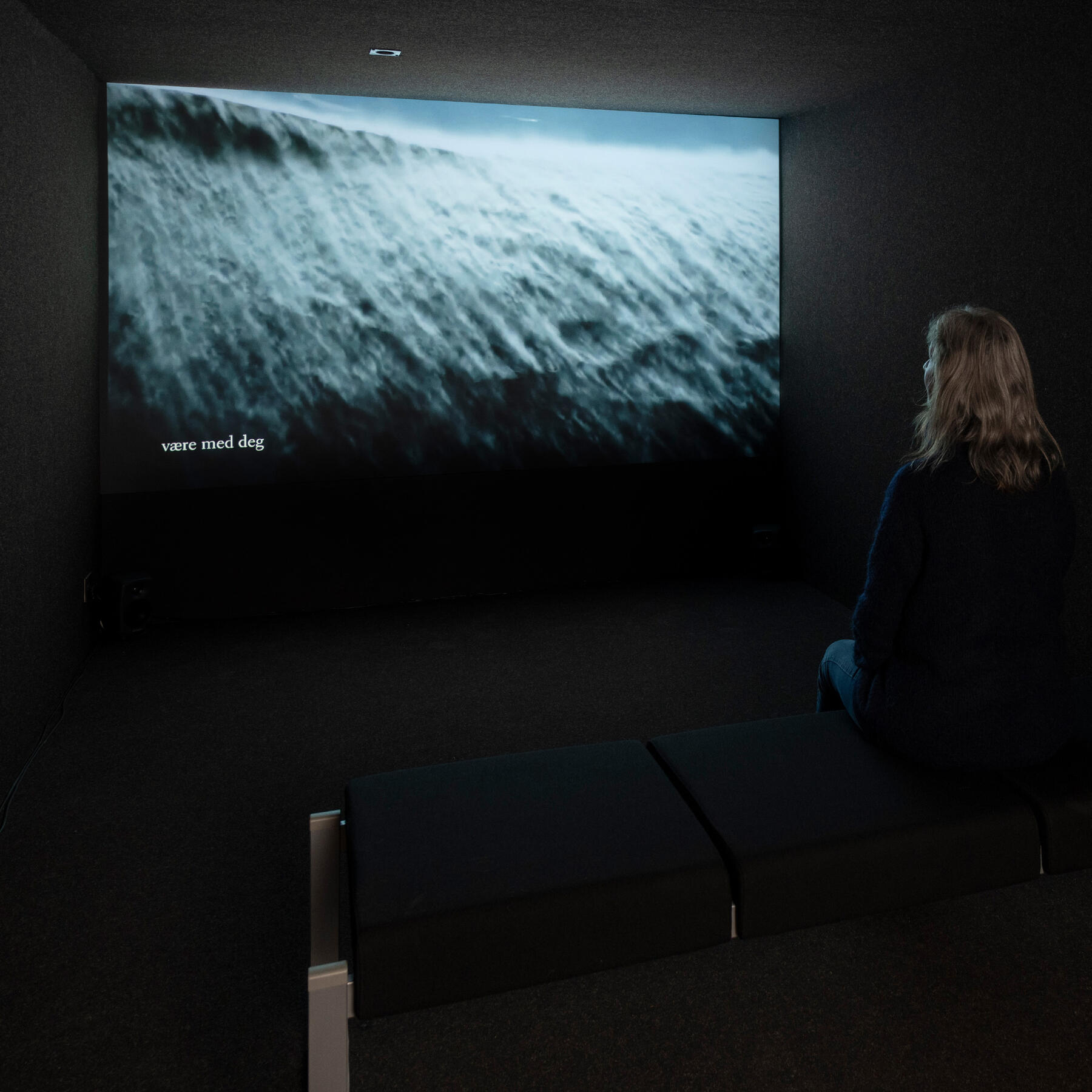Ørjan Amundsen
Ørjan Amundsen is a Norwegian based artist with an artistic practice involving video, music and text. Central to his method of composition is appropriation - the editing, manipulating and juxtaposition of already existing visual-, text- and audio material. At the core of most of works is an investigation into how digital media are being used to construct, reinforce, and maintain narratives, world views and ideologies, and to highlight and discuss the semiotic and aesthetic ‘languages’ that is contained in these processes.Amundsen holds a BFA from Tromsø Art Academy and an MFA from the Art Academy in Trondheim. Amundsen has previously exhibited and screened works at Kunstnernes Hus, Oslo; Coast Contemporary, Trondheim; Arctic Moving Image & Film Festival, Harstad; Whitechapel Gallery, London and Bergen Kunsthall.
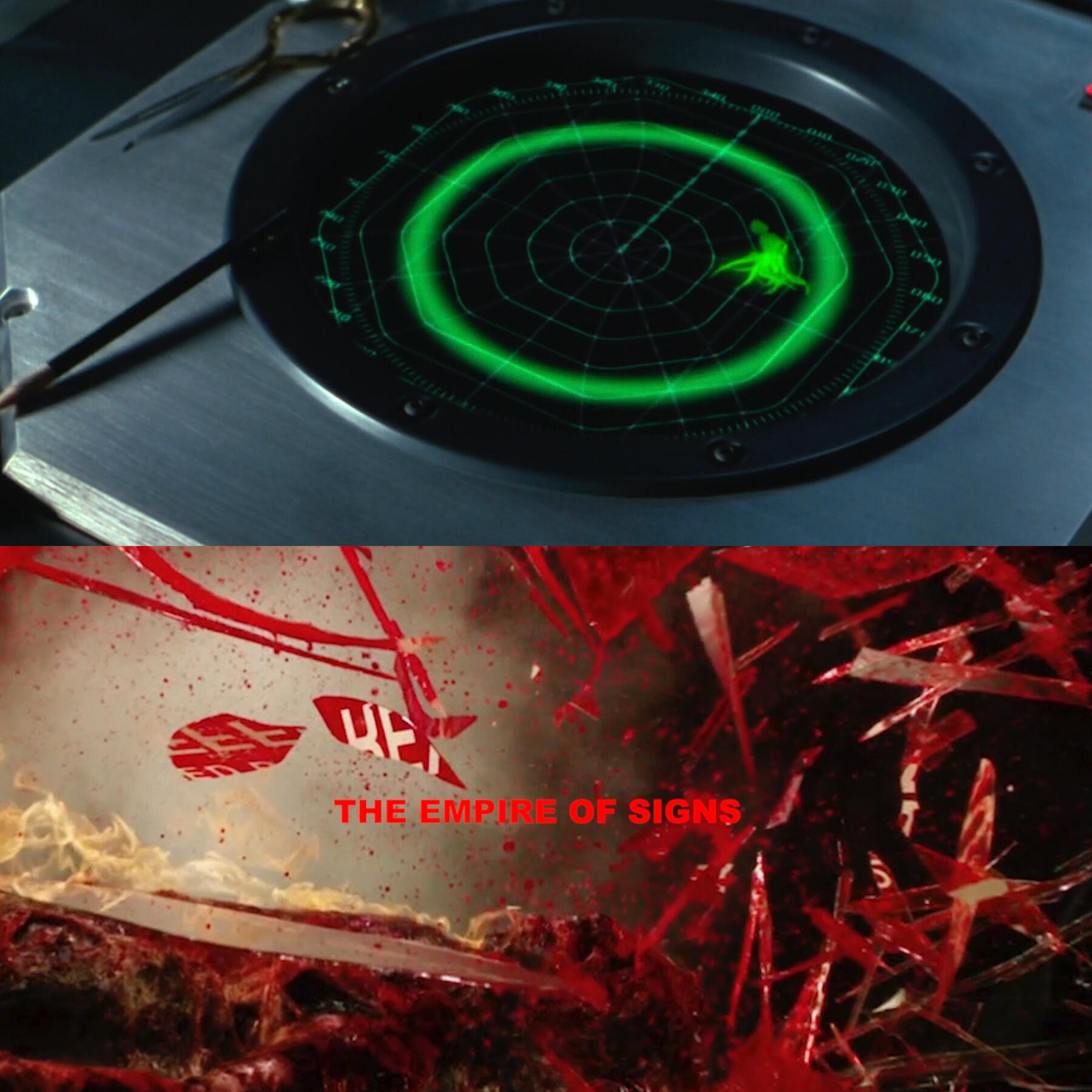
Hieroglyphs of Revelation, 2025
Single channel video with sound, 7:06 min.Hieroglyphs of Revelation investigates the process of deciphering and decrypting the myriads of signs, signals and messages that are disseminated and flows in and around our media saturated world. A world or landscape where speed, fight for attention, algorithms and disinformation challenges the borders between truth and lie, authentic and fake, knowledge and entertainment, nonsense and the meaningful. It consists of appropriated material – an eclectic mix of sources ranging from silent films, commercials, games, music videos, also classical and pop music. This material is juxtaposed with a text that also is based on appropriation, which are excerpts from philosophical and other literary texts, often related to media theory.it's a playful, yet poetic and existential work, with many references to the history of communication technologies - from cave paintings, verbal and written language, the telegraph and the internet, to today where we are standing at the cusps of a new paradigm which will be defined by artificial intelligence. Essentially Hieroglyphs of Revelation is a semiotic project that explores the process of meaning making and the production of meaning. It’s a critical reflection on the relation between media and power that explores how communication technologies and media affect human perception, understanding, emotions and values.
Horizon Zero Dawn, 2025
Video installation with sound, 04:48 min.Horizon Zero Dawn is a video installation consisting of a complete 1990s PC with monitor, keyboard, mouse, and speakers. On the screen, a video is sceened that is composed of appropriated material from film, advertising, documentary, video games, poetry, philosophy, and more. In a playful and poetic manner, Amundsen weaves together a collage about techno-optimism.The work traces the technological history of the past century, with a particular focus on the ideological foundations that originated in Silicon Valley and the early days of the internet 30 years ago. Horizon Zero Dawn explores this global center of power, which is predominantly made up of men promoting reactionary ideals where masculinity, resistance to any form of regulation, political correctness, and diversity, along with an unrestrained belief in the free market, are central—driven by a techno-optimism and faith in technological progress.Shown in the group exhibition fantom\kopi\klem\print by She Will Artspace, in an abandoned office building at Linderud, Oslo.
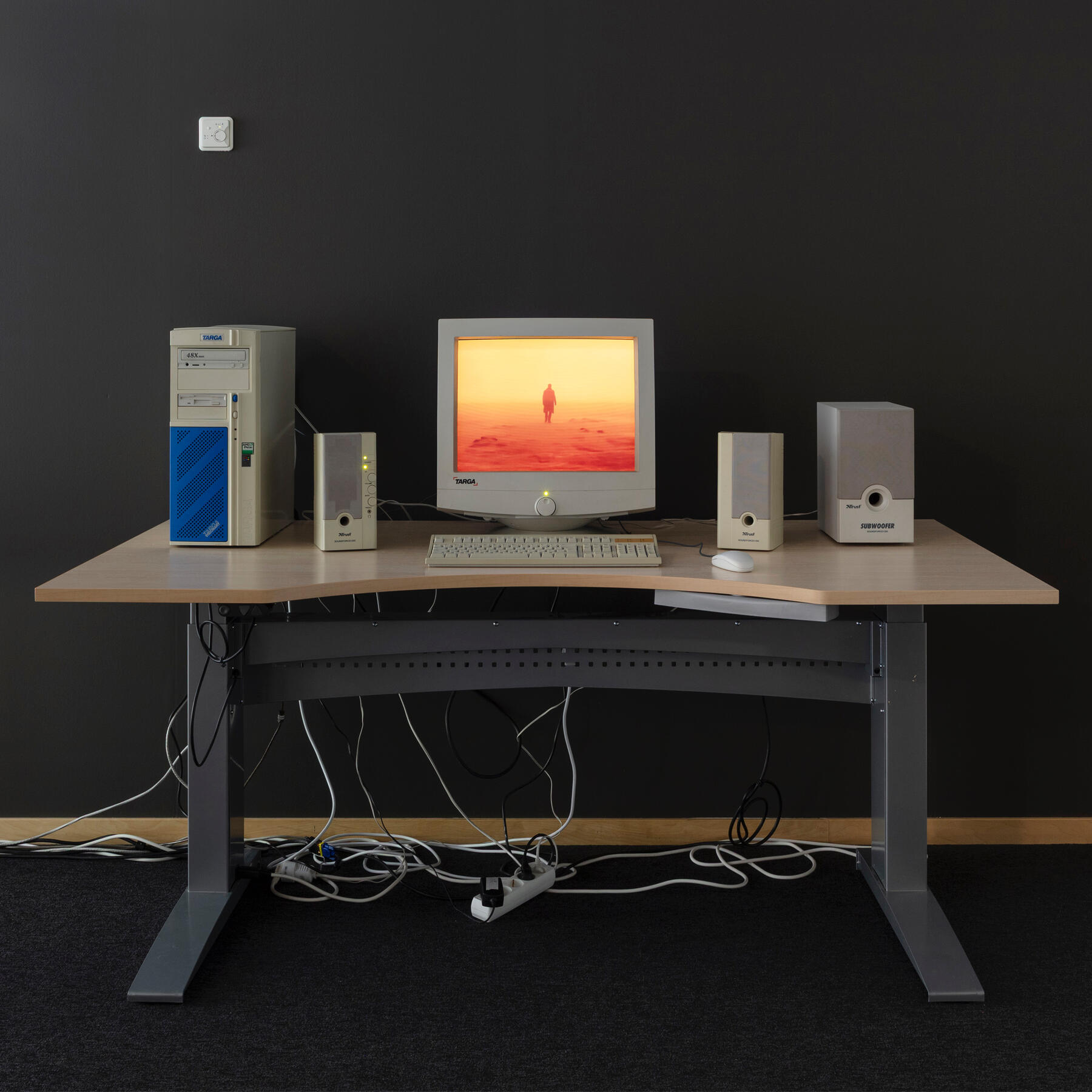
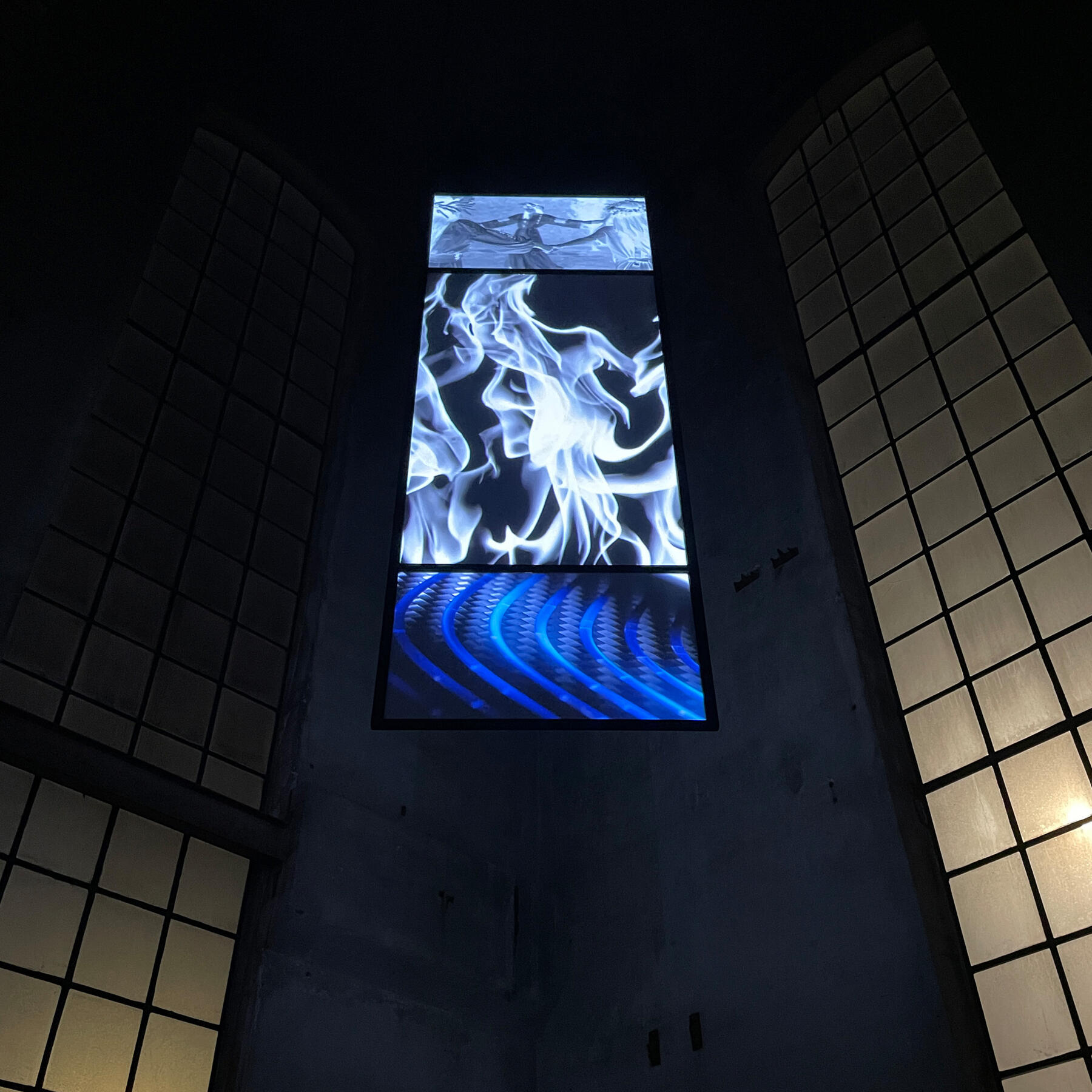
Blooming Midnight, 2025
Three channel video installation with sound, 9:38 min.The work is a poetic exploration of the human desire to live forever, taking as its starting point the Ukrainian midsummer celebration, Ivana Kupala, which among other things involves the search for a mythical flower said to grant eternal life. The work consists of original video recordings, material sourced from video archives, composed sound, and a text that weaves together mythology, literature, philosophy, science, and utopian dreams—while also serving as a critical reflection on the time we live in. The exhibition raises questions about the social, ethical, and cultural implications that an unlimited extension of human life might lead to – does the pursuit of eternal life serve humanity, or does it deepen the divide between those who can afford to chase it and those left behind?Blooming Midnight was a duo exhibition with Lesia Vasylchenko, shown in the tower room at Spriten Kunsthall (Skien, Norway) from January 23 to February 23, 2025.
Escape Velocity, 2024
Video installation with sound 3:33 min.Escape Velocity is a video installation that consists of appropriated and AI-generated imagery with a poetic voice-over set against electronic music. The installation consists of a circular screen encompassed by a low-relief design resembling ripples on a water surface. The work is narrated by a first person protagonist that is speaking from an imagined future where humanity has become surpassed by an all powerful singular and immortal being. This supreme being or consciousness grapples with remnants of humanness and earthly memories, haunted by the essence it has transcended. This speculative transhuman future trajectory starts out from the current obsession by powerful tech-billionaires to advance humans – technologically and biologically, in order to cure death and to make us, or rather, them, ready to move on from Earth.Escape Velocity was produced during a recidency program at Aldea, Bergen. Shown at at Platform Stockholm 2024 and Aldea 2024-25.
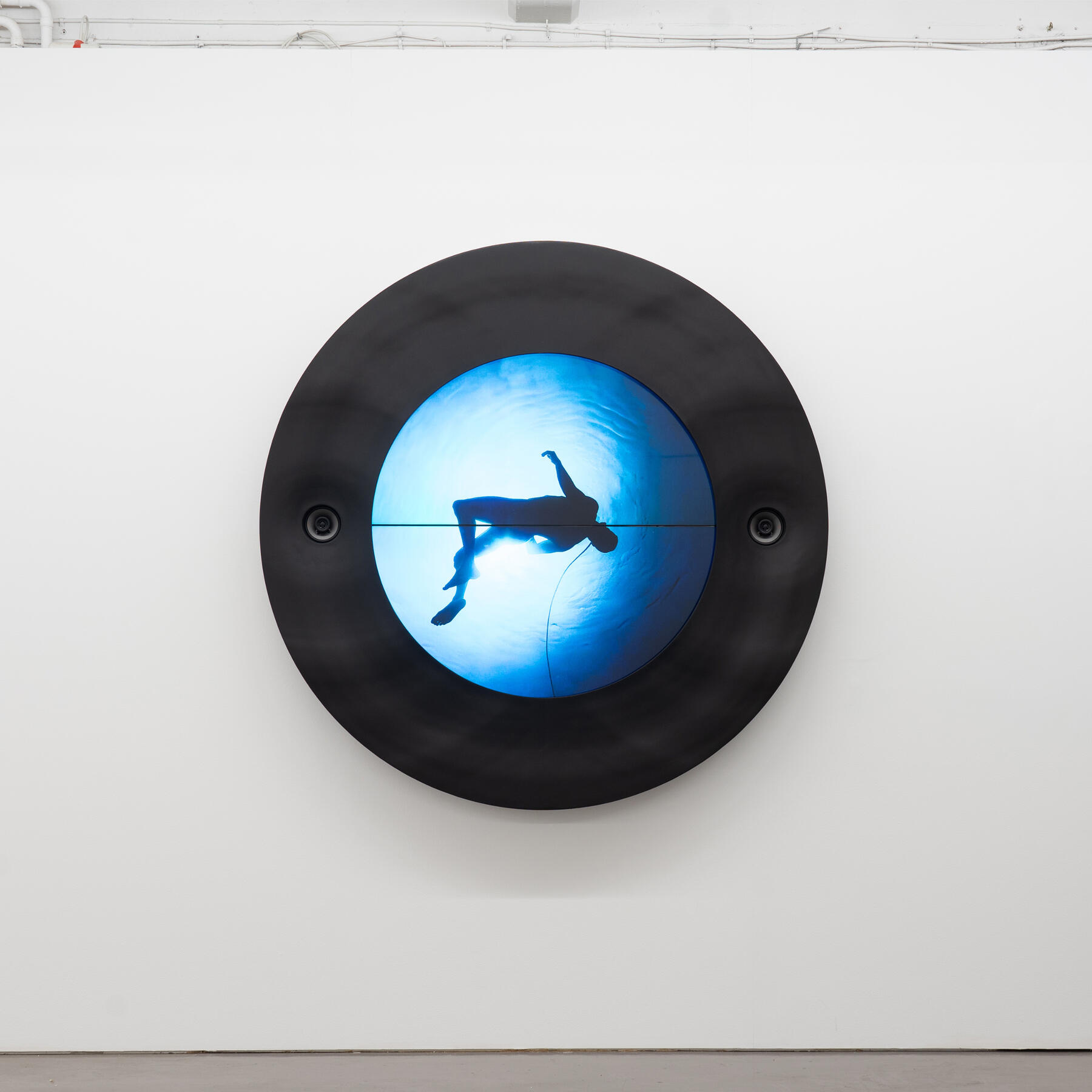
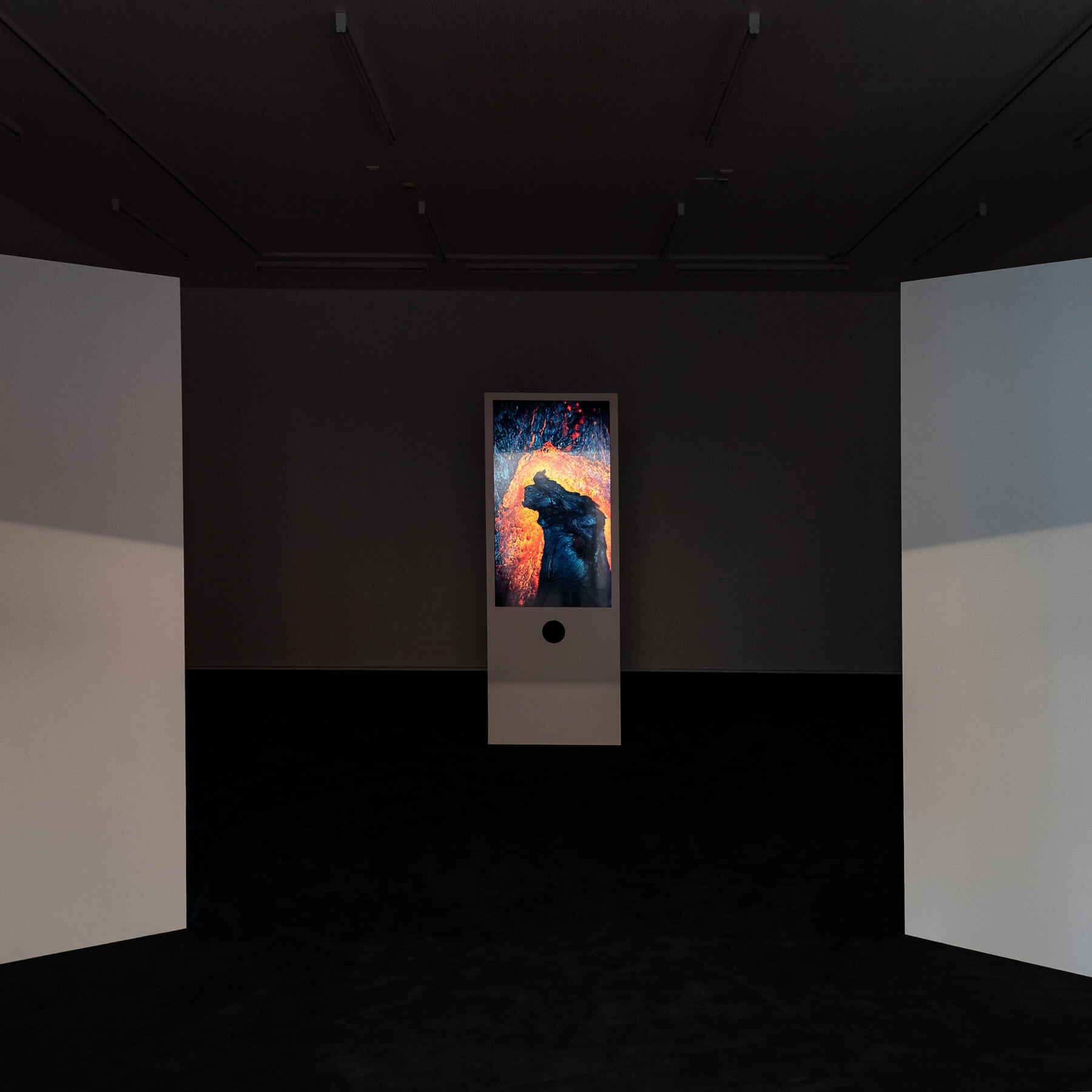
Destiny, 2023
Three channel video installation with sound, 13:32 min.Destiny is a three part video installation in which mythology, technology, facts and speculation are woven together. The work is inspired by the Norse mythological deities the Norns – an all knowing and all seeing trio responsible for shaping the course of human destinies. In Destiny, these goddesses of fate are given a modern incarnation in the form of predictive technology, artificial intelligence, and machine learning; a newer form of predictive power that analyses, learns, and makes predictions based on historical data patterns. Three female protagonists, storytellers and seers, recite one text that are constantly moving in time – from the beginning of the universe, to an imagined future with terraformed moons, sentient space ships, planet sized computers, and also the end of the universe. The screens are showing a flux of abstracted commercials juxtaposed with spectacular nature footage, portraying a never ending transformation of the elements, for instance from magma to steel to smart phones or electric cars.The installation comprised a solo exhibition at Bergen Kunsthall, 2023.
What the Rocks Knows, 2023
Single channel video with sound 9:13 min.What the Rocks Knows depicts, mountains, rocks, prehistoric stone circles and Norwegian stone churches from the 12th century. The work explores stone as a medium—whether as a building material in stone churches, human made rock formations, or as 'canvases' for petroglyphs. Through video, text, and a soundtrack based on a composition by Hildegard von Bingen, the work attempts to follow stones from their formation, transformation, and movements over the 4.5 billion years the Earth has existed. In What the Rocks Knows, stones become witnesses to lost histories, religions, and ideas, while also representing the limits of our understanding—a knowledge that forever escapes us, and fundamentally points toward a time before and after human existence.The work was shown in an exhibition curated by 'STRUKTURA. Time' at the biennale Momentum 12, Moss (Norway), 2023.
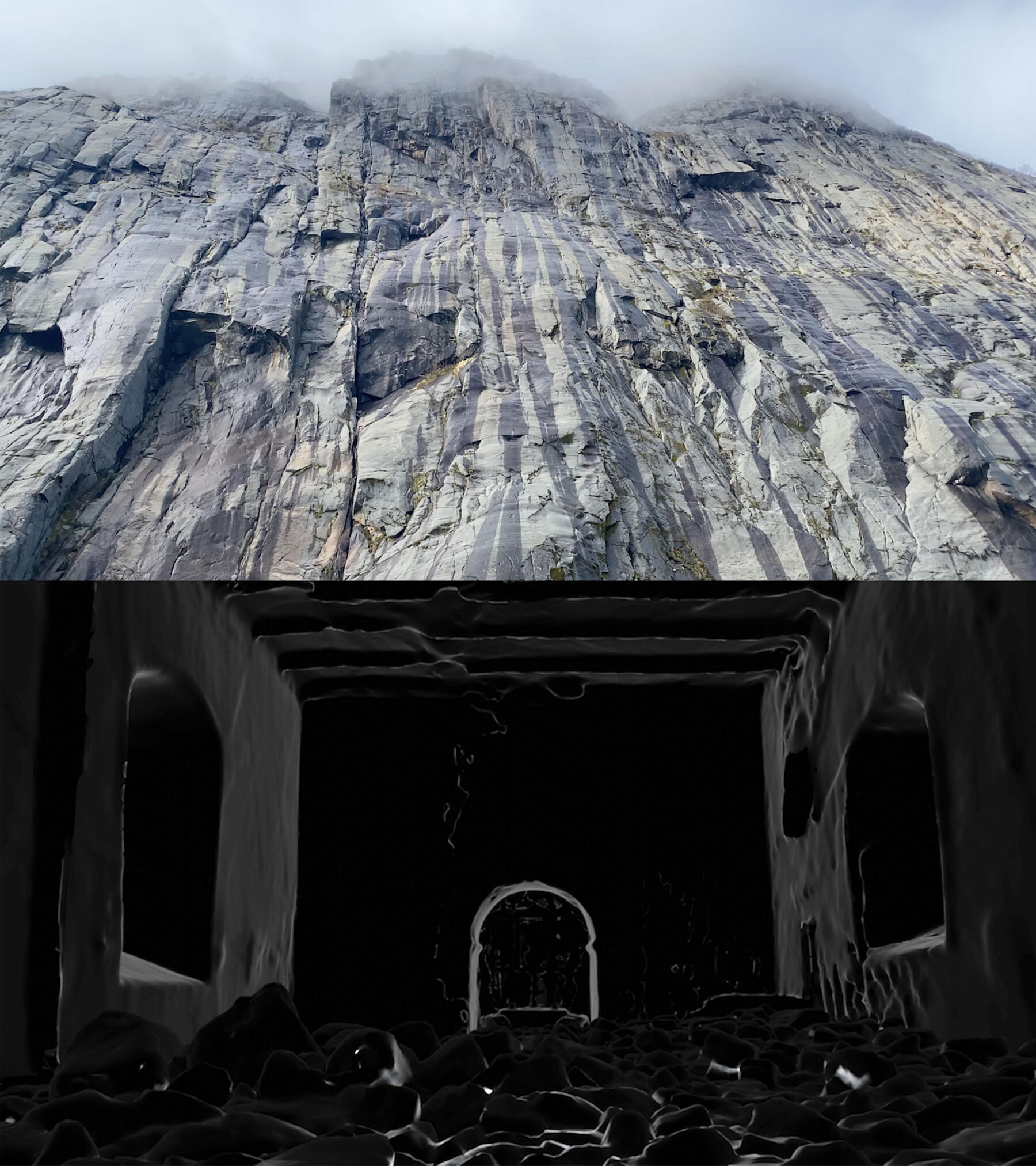
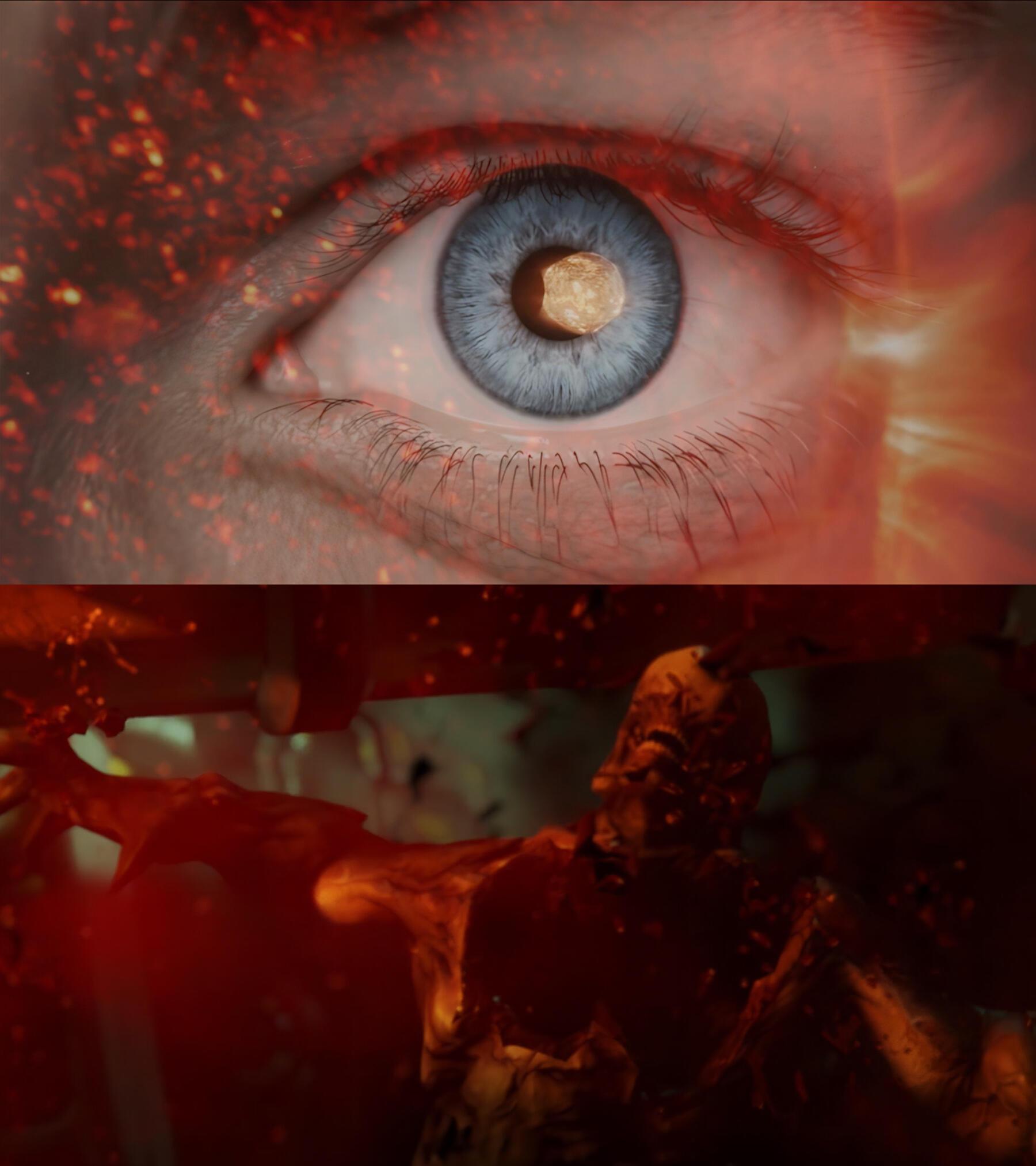
Not Actual Gameplay, 2023
Single channel video with sound, 17:39 min.The work is an open ended, poetic and speculative unfolding of our contemporary technoscientific media-saturated world told through the use of appropriated material from a variety of sources. Using the sun and light as a metaphor of knowledge and truth as a starting point, the work reveals a world full of seduction, violence, desire, acceleration, disruption, communication or the lack of it. Through four chapters the work portrays the creation and the subsequent destruction of the world caused by the sun exploding and implodes into a black hole where everything disappears, yet the world continues even after the end.The work comprised a solo exhibition at Galleri K4, Oslo, in March 2023. It was also shown at Høstutstillingen 2024 at Kunstnernes Hus, Oslo.
Is, 2022
Is consists of appropriated and manipulated nature documentaries from the Arctic and Antarctic which is juxtaposed with a poetic text based on the novel The Ice Palace by a Norwegian author Tarjei Vesaas (1963). This short poetic novel is about a deep and profound befriending of two 11 year old girls and their subsequent separation after one of the girls freezes to death inside a labyrinthic ice structure naturally made by a waterfall. Is mirrors and accentuates Vesaas’s unique sparse, figurative, and fragmentary style, and captures the original text’s existential unease where guilt, loss and the fragility of human connections are explored. Nature plays a central, captivating, mysterious, and perhaps terrifying role in this work, that evoke the current existential threat of human made climate change and collective feelings of loss, guilt and powerlessness. The video is accompanied by music that transforms from ambient soundscapes to drum based melodic techno music – a soundtrack that reflects the cold and icy landscapes in its precision and clarity alluding to the geometric crystalline structure of ice.First shown at Kunstnernes Hus, Oslo as a part of the group exhibition Breton Matiné curated by Pernille Meidell/Breton Cassette.
